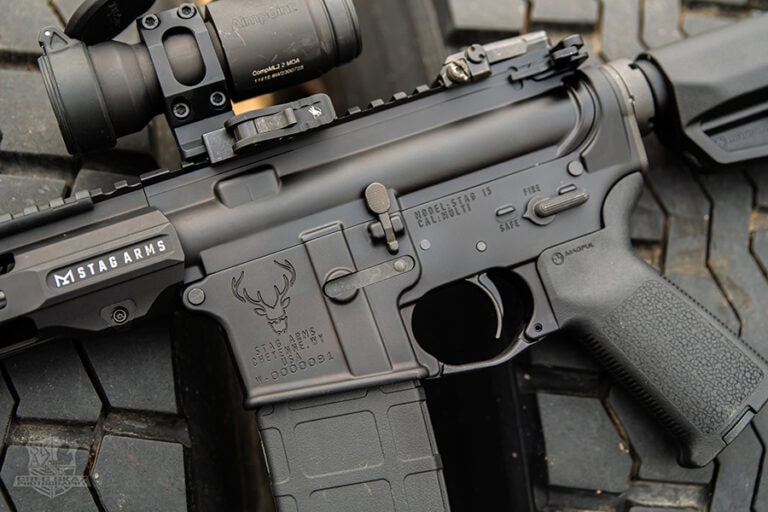PASSION APO Spotting Scope—Compact Power & Exceptional Clarity
German Precision Optics’ Passion APO is a high-performance compact spotting scope designed and…
German Precision Optics’ Passion APO is a high-performance compact spotting scope designed and…
Mesa Tactical, well-known for its pro-grade tactical shotgun accessories, now bridges the gap…
North Kansas City’s TriStar Arms has introduced the APOC, a compact 4-inch-barrel, 9mm…
The Mod-Navy Qual I’ve been doing this qual (or drill, or whatever the current nom…
• Built for road trips and off-road use• Manual transmission equipped• Wrapped in MultiCam Arctic…
I designed the Button Man to give shooters a low-round-count, low-light-engagement drill that involved both…
The San Antonio-class amphibious warfare ship (technically an LPD, for Landing Platform Dock) has recently begun entering service with the U.S. Navy. The class lead, USS San Antonio (LPD-17), was commissioned in January 2006 and made its first deployment in August 2008. Since then, the New Orleans (LPD-18) was commissioned in March 2007, followed by the Mesa Verde (LPD-19) in December 2007, the Green Bay (LPD-20) in January 2009, and the New York (LPD-21) in November 2009. (The New York is notable for including 24 tons of steel from the World Trade Center in its hull.) Additional ships now under construction or planned are the San Diego (LPD-22), the Anchorage (LPD-23), the Arlington (LPD-24), the Somerset (LPD-25), and the Murtha (LPD-26).
The San Antonio and her sister ships are intended to replace four different existing amphibious ship classes: the LPD-4, LSD-36, LKA-113, and LST-1179. It is specifically designed to support what the Marine Corps calls its “mobility triad”: the landing craft, air cushioned (LCAC), the advanced amphibious assault vehicle (AAAV), and the MV-22 Osprey tiltrotor VTOL aircraft.
The ships feature a floodable well deck with a stern ramp that can accommodate two LCACs and a helipad on the deck above that can hold two CH-53E Sea Stallions, six AH-1W Super Cobra attack helicopters, four CH-46 Sea Knights, or two Ospreys. Cargo and accommodation spaces on the vessel will hold 700 troops and 14 AAAVs, plus over 25,500 cubic feet of cargo and ammunition and 1,234 cubic meters of fuel (as cargo).
Extensive automation has reduced the crew requirement to 361. The hull has a reduced radar cross section, improved nuclear blast and fragmentation survivability, and shock hardening. All sensor masts are enclosed in eight-sided structures that are selectively frequency-transparent, serving to both reduce the radar signature and protect the masts from the elements.
Though the armament is purely defensive, the San Antonio-class LPDs mounts two launchers for the Raytheon RIM 116 surface-to-air missile, which is also capable of intercepting anti-ship missiles. Space has been allocated for the Evolved Sea Sparrow Missile (ESSM) system, and for close-in defense the ships have two Mark 46 Mod 2 30mm chain guns and two Mark 26 Mod 18 .50-caliber machine guns.
The LPDs have a total of five radars: the AN/SPS-48E air search radar, the AN/SPS-64(V)9 navigational radar, the AN/APQ-9B surface search radar, and two AN/SPS-73 surface search radars. San Diego (LPD-22) will receive the ship self-defense system (SSDS), which integrates the radar, electronic warfare suite, and infrared sensors; SSDS will be retrofitted to earlier ships in the class later. These vessels also have decoy systems designed to defeat torpedoes and anti-ship missiles.
The San Antonio-class has experienced a number of construction and cost overrun issues, but these problems are gradually being resolved, and the final unit is scheduled for delivery in 2015.
Guns & Tactics is an online media outlet that focuses on the firearms community, not just firearms and gear but also quality training, technical break downs and enlightening presentations.

The range bag market is crowded, making it hard to navigate all of the potential features and benefits. Here are what I consider to be the top 3 range bags.
Agent Robert Vadasz of the the United States Border Patrol captured his 4th NRA National Police Shooting Championship (NPSC) at the Shooting Range in Albuquerque, New Mexico. Held…
[dcs_img_center desc=”9mm Vodka” framed=”no” w=”600″ h=”352″] http://gunsandtactics.wpengine.com/wp-content/uploads/2013/09/vodka-600-352.jpg [/dcs_img_center] [dcs_post_top] [dcs_fancy_header bgcolor=”#ffffff” color=”#000000″ fweight=”bold”]Jim Denoon turns to Crowdfunding for launch of his product, 9mm Vodka.[/dcs_fancy_header] [dcs_thinspliter size=”medium”] You don’t…

If you’re into firearms, you may have heard of ARMSLIST, and with over 2.5 million users, you’ve probably also used the website.

Stag Arms is proud to unveil our new Cheyenne, Wyoming marked receivers complete with a new Stag logo and branding.

It is the end of the month so that means its QA time and this show happens to be on the road. We had some great questions and comments and truly appreciate all of our viewers!
© 2025 UN12 Magazine
© 2025 UN12 Magazine
Wait! Don’t forget to